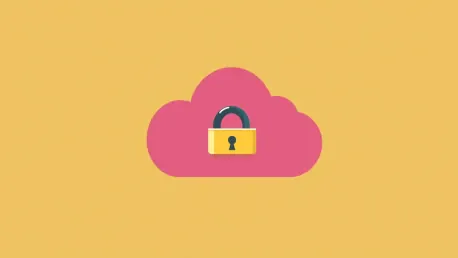Adopting cloud infrastructure quickly often leaves security lagging behind. This article explores the importance of incorporating observability into cloud security to bridge this gap effectively.
The Rush to Cloud Adoption and Security Challenges
Disparity in Cloud Adoption and Security Readiness
The speed at which businesses are embracing cloud technologies has created a noticeable disparity between adoption and security readiness. Companies pressured by the need to innovate and stay competitive often prioritize the rapid deployment of cloud solutions, inadvertently neglecting the stringent security protocols needed to safeguard these new environments. The gap between cutting-edge cloud infrastructure and traditional security measures continues to widen, leaving many enterprises exposed to significant risks. This accelerated pace can result in vulnerabilities that cybercriminals are quick to exploit, making it even more essential to revamp security approaches in tandem with technological advancements.
The transition to cloud-based systems involves complicated architectures that traditional security tools neither anticipate nor adequately protect. The inherent dynamism of cloud environments means that static security measures quickly become obsolete. Many organizations find themselves playing catch-up, retrofitting security solutions to accommodate the fluid nature of cloud deployments after the fact. This reactive approach leaves critical windows open, during which data and systems remain vulnerable to attacks. As a result, there is a clear need for strategic, proactive planning from the outset to integrate security measures that evolve alongside the cloud technologies they are protecting.
The Pitfall of Post-Development Security Evaluations
A critical flaw in current cloud security practices is the delayed involvement of security teams. Typically, security evaluations happen post-development, an approach beset with challenges and inefficiencies. This late-stage scrutiny often positions security recommendations as obstacles rather than essential safeguards, leading to friction between development and security teams. In such a setting, security measures are seen as retrofitting rather than intrinsic components of the development lifecycle, making thorough implementations more difficult and sometimes less effective.
By integrating security evaluations from the onset, organizations could significantly mitigate risks and streamline workflows. Security should be viewed as a foundational pillar of the development process, ensuring that all stakeholder requirements, including those of the security team, are met without the need for disruptive adjustments down the line. Early involvement provides security professionals with the opportunity to influence design decisions, resulting in systems that are secure by design rather than through later amendments. Such an approach fosters a more collaborative environment where security is an enabler of innovation rather than a roadblock.
The Role of Observability in Improving Security
Early Identification of Configuration Errors
The inclusion of observability in the security arsenal allows for the early identification and rectification of configuration errors. Observability platforms provide comprehensive insights into the operational state of cloud environments, enabling security teams to detect misconfigurations and security flaws as they occur. For instance, monitoring tools can pinpoint issues such as improperly set user permissions or unencrypted data transmissions, which can then be swiftly corrected before they become severe vulnerabilities. This level of visibility is critical in maintaining the integrity and security of cloud deployments, particularly in the increasingly complex landscape of modern IT infrastructure.
These platforms offer the advantage of real-time detection, allowing for immediate action and minimizing the risk of misconfigurations going unnoticed. With the ability to continuously monitor data flows and system states, security professionals can stay ahead of potential threats by making informed, timely adjustments. Moreover, observability helps ensure compliance with evolving security standards and regulations, offering an added layer of protection. Organizations harnessing observability can proactively safeguard their assets, thereby avoiding the pitfalls of reactive security measures and maintaining robust defenses against emerging threats.
Enhancing Collaboration Between Teams
Observability doesn’t solely benefit the security domain; it also plays a pivotal role in fostering enhanced collaboration across IT and development teams. By offering visibility into data usage and system operations, observability creates a shared understanding of the security landscape among different departments. This transparency allows for more coordinated and effective responses to security challenges, ensuring that security measures are seamlessly integrated with broader business objectives. The ability to visualize and analyze system behavior helps bridge the gap between development and security, shifting the perception of security from a blocker to an enabler of innovation.
Through observability, security professionals can provide actionable insights to development teams during the early stages of a project, ensuring that security considerations are built into the architecture from the beginning. This collaborative approach results in a more cohesive strategy that aligns security practices with operational goals. Additionally, observability fosters a culture of continuous improvement and innovation by enabling teams to iterate and refine their processes based on real-time data. The end result is a more resilient, agile, and secure organizational infrastructure capable of adapting to new challenges as they arise.
Common Cloud Misconfigurations
The Impact of Third-Party Tools
One of the common pitfalls in cloud security stems from the introduction of third-party tools by non-expert employees. When these tools are incorporated without adequate understanding or consideration of security implications, they often lead to serious configuration errors. Such missteps can compromise user roles, weaken data encryption measures, and disrupt data retention policies. Employees lacking in IT or security expertise may inadvertently set up these tools in ways that leave substantial gaps in organizational defenses, thereby exposing sensitive data to unauthorized access and potential breaches.
This issue is compounded when employees use personal credit cards or opt for free services, bypassing the standard finance and vendor intake processes meant to ensure compliance with security protocols. This can lead to hidden vulnerabilities that are difficult to track and manage, creating blind spots in the organization’s security landscape. The unauthorized use of third-party tools can also result in a lack of cohesion and control over the security framework, as disparate and unmonitored tools could introduce inconsistent and unverified security measures. To combat these risks, organizations must enforce stringent procedures and provide adequate training to ensure that only vetted and approved tools are used within the network.
Avoiding Hidden Vulnerabilities
The vulnerability of corporate data is often exacerbated when employees sidestep standard procedures through the use of personal payment methods for third-party services. Such actions can lead to vast, unmonitored expanses within the corporate network, where security protocols are neither enforced nor verified. These hidden vulnerabilities create significant blind spots, leaving the organization susceptible to targeted attacks and breaches. It’s crucial for businesses to establish clear guidelines and monitoring systems to oversee the adoption of third-party tools and ensure compliance with security standards.
Implementing robust authentication mechanisms and financial oversight can significantly curb these risks. Educating employees about the importance of adhering to established protocols and the potential repercussions of deviations can foster a security-aware culture. Additionally, incorporating comprehensive audits and regular reviews of third-party tools and services ensures that all components of the system align with the overarching security strategy. By maintaining strict control over the tools integrated into the organizational infrastructure, businesses can better manage and mitigate hidden vulnerabilities, safeguarding their operations and data from potential threats.
Strengthening Access Control Practices
Implementing MFA and SSO
Access control remains one of the most vital aspects of cloud security, and the implementation of robust access measures like multi-factor authentication (MFA) and single sign-on (SSO) is paramount. MFA adds an essential layer of security by requiring multiple forms of verification before granting access, effectively reducing the risk of credential theft and unauthorized access. It makes it significantly more challenging for attackers to compromise accounts, even if they obtain a user’s password. As threats continue to evolve, relying solely on passwords is no longer sufficient; adopting MFA systems is a critical step in fortifying access points against potential breaches.
Single sign-on (SSO) further simplifies the access control landscape by allowing users to authenticate just once, gaining access to multiple applications and systems without the need for redundant logins. This not only enhances user convenience but also streamlines the process of access management. By simplifying the onboarding and offboarding of users, SSO ensures consistent application of security policies across the board, reducing the chances of lapses in account management. Moreover, centralizing access control through SSO systems enables better monitoring and control, allowing security teams to quickly detect and respond to suspicious activities across the network.
Centralizing Access Management
Centralizing access management within an IT or Enterprise Identity and Access Management (EIAM) team strengthens an organization’s security posture manifold. Having a dedicated team responsible for overseeing the lifecycle of access management ensures consistent enforcement of security policies and standards. This centralized approach helps in maintaining stricter control over who has access to what resources, and it reduces the risks associated with decentralized access management systems where inconsistencies and gaps often arise. It provides a unified framework for managing user identities, provisioning and de-provisioning access, and monitoring for suspicious activity.
An EIAM team can leverage advanced tools and technologies to automate and streamline access management processes, reducing human error and improving efficiency. By integrating centralized identity management systems with other security tools, such as observability platforms, security teams can gain comprehensive visibility into user activities and access patterns. This holistic view allows for more informed decision-making and quicker responses to potential security incidents. Ultimately, centralizing access management not only fortifies security but also enhances operational integration and consistency within the organization’s security strategy.
Limiting Security Incident Impact
Reducing Blast Radius Through Segmentation
Reducing the potential impact of security incidents in the cloud involves strategic segmentation of the cloud environment. When cloud architectures are designed with proper segmentation, they create isolated environments or zones, ensuring that a breach in one segment doesn’t necessarily compromise the entire infrastructure. This approach significantly limits the “blast radius” of any security event, containing potential damage and preventing the spread of incidents across the network. Proper segmentation involves not just dividing the network but also implementing strict access controls between these segments, ensuring that only authorized entities can interact with each zone.
The practice of segmentation is especially critical in mitigating the risks associated with poorly configured cloud environments. For instance, a flat network structure where everything is connected can amplify the impacts of a security breach, as attackers can move laterally with ease once they gain a foothold. Segmenting the network reduces this risk by establishing barriers that contain the attack to a smaller, more manageable portion of the environment. This containment strategy is essential in maintaining control during a security incident, allowing for more efficient and effective responses, minimizing downtime, and protecting critical assets.
Enforcing Authentication Best Practices
Good authentication practices are fundamental to robust cloud security. Enforcing best practices such as regularly changing default passwords, avoiding password reuse, and adopting complex password protocols can significantly reduce vulnerabilities. Many security breaches exploit weak authentication measures, making it crucial to implement stringent protocols that ensure secure access. Utilizing tools that enforce password policies, monitor for compliance, and prompt users to update credentials regularly can mitigate risks and enhance overall security. Additionally, educating users about the importance of strong passwords and secure authentication methods is vital in maintaining a resilient defense.
By adopting multi-layered authentication strategies, organizations can create an additional security buffer. For example, integrating biometric verification or hardware tokens for authentication can further secure access points beyond traditional passwords. These methods add complexity for attackers, making unauthorized access more difficult. Furthermore, consistent application of these best practices across the entire organization ensures a unified security posture, reducing the likelihood of weaknesses in the system. Robust authentication mechanisms, coupled with continuous education and vigilance, can significantly fortify the defenses of cloud-based infrastructures.
Proactive Security Involvement
Early Engagement in Cloud Project Planning
For security teams, being involved early in cloud project planning is crucial. This proactive engagement allows security professionals to align with development and IT teams right from the project’s inception, ensuring that security considerations are integrated into the foundational design. Early involvement helps in identifying potential security challenges before they become deeply embedded in the infrastructure, making it easier to implement effective controls without significant rework. This approach fosters a culture of security awareness and collaboration, promoting shared responsibility for safeguarding systems and data.
Understanding cloud technologies deeply is essential for security teams to provide meaningful input during the planning stages. Familiarizing themselves with key paradigms such as DevSecOps, infrastructure as code, and compliance as code enables security teams to offer valuable insights and solutions tailored to the specific needs of the project. This expertise helps in constructing secure cloud infrastructures from the ground up, reducing the chances of misconfigurations or oversights that could lead to vulnerabilities. By positioning themselves as trusted partners, security teams can aid in developing innovative yet secure systems that align with business goals.
Leveraging Observability for Real-Time Monitoring
Leveraging observability for real-time monitoring is a game changer in cloud security. Observability tools provide detailed insights into how data flows within the system, offering a continuous and precise understanding of service and data management. This capability is crucial for detecting and mitigating risks promptly, ensuring that security teams can act quickly to neutralize threats. Real-time monitoring enables proactive risk management, allowing organizations to maintain compliance with security standards and swiftly address any deviations that occur. This continuous vigilance is vital in the dynamic and ever-evolving cloud environment.
Observability supports automation, further enhancing security operations by minimizing manual intervention and reducing the likelihood of human error. Automated monitoring tools can instantly flag anomalies or suspicious activities, triggering immediate responses to contain and investigate potential issues. This automation streamlines security workflows, enabling teams to focus on strategic initiatives rather than routine surveillance tasks. Moreover, the insights provided by observability tools facilitate ongoing improvement of security policies and practices, ensuring that defenses are always aligned with the latest threat landscape. This proactive, data-driven approach is essential for maintaining robust cloud security in the face of escalating cyber threats.
Strategic Insights for Future Security Integration
In today’s era, the rapid adoption of cloud infrastructure can often result in security measures falling behind. As businesses and organizations transition to cloud-based systems, the urgency to implement new technologies swiftly sometimes overshadows the essential need for robust security protocols, leaving vulnerabilities that can be exploited. This article delves into the significance of integrating observability into cloud security frameworks to address these challenges effectively. Observability refers to the capability to monitor and understand the state of a system through its outputs, like logs, metrics, and traces. By embedding observability into cloud security, IT teams can gain real-time insights and a comprehensive view of their systems, allowing them to swiftly detect, diagnose, and respond to potential security threats. This proactive approach ensures that security keeps pace with innovation, thus safeguarding sensitive data and maintaining trust. The discussion highlights that observability in cloud security is not just an enhancement but a necessity to close the security gap created by rapid tech adoption.









